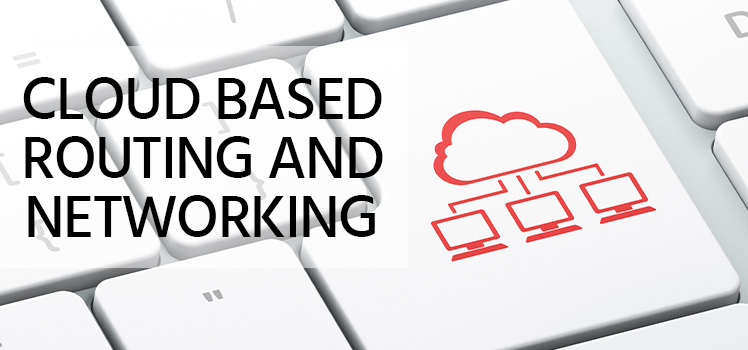Does the Cloud Solve Problems?
There is something about that word cloud. We know that cloud is a catch-all term for the many services available on the internet. And there are particular benefits to be found in moving to the cloud, as we have previously discussed in this blog space. But the cloud is not some heavenly realm of digital nirvana as the word seems to suggest. It is not a mysterious world of perfection to which we can turn to overcome all our own computing failures. The cloud is not infallible.
A Better Network
Lest we sink into some mire of criticism, we should start with the positive aspects of the cloud. It can do a lot for your business. The computer consulting company WAMS sums it up in an article called The 5 Biggest Challenges Cloud Computing Can Solve in which they describe how the cloud can meet business needs, including:
- Network upgrades
- Mobility
- Security and disaster recovery
- Scalability and flexibility
- Cost control
The truth is that, with careful thought and preparation, most companies will be better off by moving at least part of their IT to the cloud. Longer lists describing problems solved by the cloud are provided by Leaseweb (15 Business Problems That Can Be Solved By Moving to the Cloud) and Rapidscale (10 Problems Solved By the Cloud). So it’s fairly easy to make the case that, yes, the cloud can — and does — solve problems.
More Problems?
We’ve identified an easy fix then, right? Move everything to the cloud, and all your problems will be solved. Not so fast.
While all the experts will admit that the cloud adequately addresses certain issues, and does it well, you would be hard-pressed to find any cloud consultant who would advise you to blindly move everything to the cloud — lock, stock, and barrel. The complexities of IT infrastructure simply do not lend themselves toward this kind of blanket approach. Moving too quickly can lead to unanticipated consequences you might later regret.
In fact, switching from a local IT infrastructure to a cloud IT infrastructure can simply lead to new problems. Technology company Optimal Networks asks the question What Are the Problems with Cloud Computing? Let’s discuss their ideas in some detail.
Out of Sight, and Out of Your Control
Outsourcing your IT to a cloud provider may seem like a good idea — until things go wrong. But by then your computing resources may be so far removed from your company’s supervision that you might not even be able to determine which resources are involved in a fault. AWS, Azure, or Google Cloud promise certain levels of availability and performance according to your Service Level Agreement (SLA), but that can mean that you’ve given up visibility into the important bits of the infrastructure that make everything work. We talk about a few of these challenges in our article entitled 4 Cloud Gotchas to Avoid.
How much trust do you have in your cloud provider? Remember, the availability of your cloud infrastructure — SLA notwithstanding — is much more important to you than it is to them.
How much trust do you have in your cloud provider? Remember, the availability of your cloud infrastructure — SLA notwithstanding — is much more important to you than it is to them. A major outage affecting one of their availability regions might impact thousands of customers. Such an event would be a critical issue for the provider, but you would only be one of many customers. The urgency for your particular cloud resources may not be the same as your own support team would have for a local data center problem. And it may not get attention as quickly.
The fact is that without complete control of your cloud infrastructure, you may have to sit patiently, twiddle your thumbs, and hope for the best while your cloud provider investigates an issue. Of course, you are paying them for this support. But you will have to live with your choice to hand your network over to strangers.
Counting the Cost
You may feel relieved to delegate the management of your IT infrastructure to a cloud computing company. But you may not feel so happy when you get the bill. It all depends on how well you calculate and manage your cloud costs. It makes more sense for a larger organization to convert to the cloud, because the dynamic allocation of cloud resources will save you money soon enough. But small businesses might not make the same percentage of savings.
If you’re not careful, your problem of local IT management might be replaced by the problem of managing unpredictable cloud costs. You might want to have a look at Techopedia’s tutorial on the subject, How to Calculate Cloud Computing Costs. Infoworld writer David Linthicum says that you should take the time to develop your own algorithm for predicting the costs of cloud computing.
Moving Your Problems
If you think that moving your IT infrastructure to the cloud will eliminate your problems, think again. Does anyone really believe that relocating your computing to another environment will magically give you perfect availability, performance, and security? It’s like the person who moves to another state or country to start over. A famous quote from the character Buckaroo Bonzai comes to mind: “Remember, wherever you go, there you are.”
Moving to the cloud may just be a matter of moving your problems or exchanging them for new ones. If you had doubts about some of your IT department’s work in the data center, just wait until they’re turned loose on the cloud. Building out virtual servers and software-defined networks on the cloud can be tricky business. Just because your provider rents you the resources doesn’t mean they will hold your hand throughout your whole cloud experience.
Conclusion
As a marketing concept, the cloud has been a great success, and there are some surprising trends in the adoption of the cloud. But the cloud will get you if you don’t watch out. Whatever advantages you have anticipated in moving to the cloud should be counterbalanced by a healthy awareness of possible problems. And keep in mind a further warning from us: Murphy’s Law exists in the cloud too.
 New feature: DNS Change Alerting
New feature: DNS Change Alerting  Notable Network and Cloud Outages of 2021
Notable Network and Cloud Outages of 2021  Anycast Hosting Made Easy
Anycast Hosting Made Easy 


